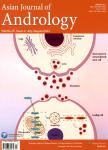Targeted prostate biopsy: value of multiparametric magnetic resonance imaging in detection of localized cancer
Targeted prostate biopsy: value of multiparametric magnetic resonance imaging in detection of localized cancer作者机构:Departments of Urology University of California Los Angeles USA. Pathology University of California Los Angeles USA.
出 版 物:《Asian Journal of Andrology》 (亚洲男性学杂志(英文版))
年 卷 期:2014年第16卷第4期
页 面:522-529页
核心收录:
学科分类:07[理学] 0809[工学-电子科学与技术(可授工学、理学学位)] 08[工学] 070205[理学-凝聚态物理] 09[农学] 071007[理学-遗传学] 090102[农学-作物遗传育种] 0710[理学-生物学] 1002[医学-临床医学] 0805[工学-材料科学与工程(可授工学、理学学位)] 080502[工学-材料学] 0901[农学-作物学] 0836[工学-生物工程] 0702[理学-物理学]
基 金:supported in part by Award Number
主 题:fusion biopsy magnetic resonance imaging (MRI) prostate biopsy prostate cancer targeted biopsy ultrasound
摘 要:Prostate cancer is the second most common cancer in men, with 1.1 million new cases worldwide reported by the World Health Organization in one recent year. Transrectal ultrasound (TRUS)-guided biopsy has been used for the diagnosis of prostate cancer for over 2 decades, but the technique is usually blind to cancer location. Moreover, the false negative rate of TRUS biopsy has been reported to be as high as 47%. Multiparametric magnetic resonance imaging (mp-MRI) includes T1- and T2-weighted imaging as well as dynamic contrast-enhanced (DCE) and diffusion-weighted imaging (DWI). mp-MRI is a major advance in the imaging of prostate cancer, enabling targeted biopsy of suspicious lesions. Evolving targeted biopsy techniquesmincluding direct in-bore biopsy, cognitive fusion and software-based MRI-ultrasound (MRI-US) fusion--have led to a several-fold improvement in cancer detection compared to the earlier method. Importantly, the detection of clinically significant cancers has been greatly facilitated by targeting, compared to systematic biopsy alone. Targeted biopsy via MRI-US fusion may dramatically alter the way prostate cancer is diagnosed and managed.



